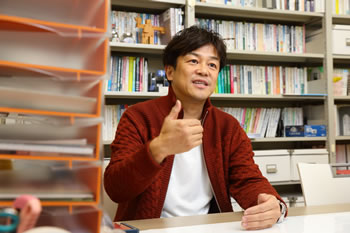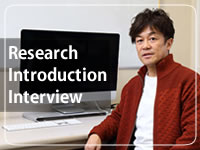Research Introduction Interview
Shining a light on the professionalism of teachers which supports Early Childhood Education and Care (ECEC) and illustrating that to societies
■ Visualizing the professionalism of Early Childhood Education and Care (ECEC) embedded in daily practice

Many of us feel that the ECEC we receive in our infancy has a profound impact on the rest of our lives. Nevertheless, teachers in daycare, preschool, and kindergarten teachers tend to be somewhat underestimated compared to teachers in elementary school and beyond. My research aims to reveal the depth of childcare practices and contribute to improving the quality of ECEC.
One of the major themes is the exploration of the professionalism of teachers. In general, in school education, there are many cases where teachers stand at the top to give guidance. However, in the case of ECEC, there is an emphasis on children's independent play. This is why the teachers' professionalism is characterized by its invisibility as if teachers are not doing anything or just playing with the children. We believe that shedding light on the teachers' professionalism embedded in these practices can contribute to improving the quality of ECEC.
What do we mean by the professionalism of teachers? High-quality ECEC means that children feel safe and comfortable in kindergarten and can play in a way that suits them.
Here's one good example of professionalism. As I was observing in preschool, a one-year-old child was sitting on a teacher's lap and was being spoiled. After playing for a while, the child must've gotten a sense of safety, gotten off the teacher's lap, and started playing behind the teacher's back. The teacher sat down and used herself as a separator to let the child behind her concentrate on playing while still interacting with other kids. She still felt the child's presence behind her while guaranteeing a comfortable space for the child to play. Watching her interact with the children based on this fine sense of distance, I felt that behind the teacher's actions, which at first glance may seem unconcerned, there is a high level of professionalism embedded in them. In this way, in practice, there are many cases where teachers are not necessarily actively involved with the child (such as letting a child play on their own back). Still, these are not to be mistaken for passive acts such as standing by the side or not interacting in any way. By understanding the situation, the child's personality, and their inner thoughts, a professional teacher instantly determines when and how to interact with the child and pave the way for the child to act independently. It is the professionalism of teachers to perform such high-quality ECEC.
■ Building a mutually beneficial relationship with teachers through qualitative research methodology

High-quality ECEC is characterized by the fact that it is a complex and multifaceted activity embodied in the exercise of the individual child's autonomy and is, in a sense, creative in nature. Therefore, the data that provides the basis for what constitutes high-quality ECEC is difficult to express in objective numbers alone and cannot be standardized. This is why I aim to accumulate evidence based on practical cases, such as visualizing and theorizing the characteristics of high-quality ECEC that cannot be expressed numerically. I plan to pursue a qualitative research methodology based on various ethnographic theories, focusing on data collection methods such as fieldwork and interviews.
I am also researching in-school training and childcare conferences as a way to create a place that encourages the teachers' professional development, as it is vital for achieving high-quality ECEC. In doing so, I insist on what I call "collaborative" in-school training, where we talk, learn, and support each other. One of the characteristic approaches is to use many discussion methods through videos and photos that show ECEC practices in our own schools, other schools, or schools overseas. Rather than discussing the pros and cons of specific practices, the participants will be able to reflect on their own practices and gain new perspectives by sharing various insights.
I believe my study is unique as it incorporates both research and practical situations. Taking an approach based on qualitative research methodology, while building a mutually beneficial relationship with teachers is the style of research I value most.















